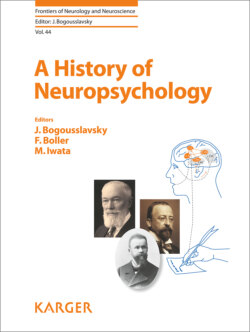Читать книгу A History of Neuropsychology - Группа авторов - Страница 22
На сайте Литреса книга снята с продажи.
Emotion
ОглавлениеIn 1881, a right-hemisphere role for emotion was proposed as well. Luys [42] compared patients with opposite-side lesions, their locations in most cases indicated by the side of hemiplegia and confirmed by autopsy. Whereas “ordinary” right-hemiplegics (with left-side lesions) are “apathetic,” “silent,” and “stricken with hebetude,” “emotional” left-hemiplegics show “an abnormal impressionability … respond[ing to questions] in a limping voice, broken up by a kind of sobbing.” Other times, “they are boisterous and loquacious” (pp 379–380). Leborgne, whom Luys presumably would have called “ordinary,” partly fit the pattern: silent save for his monosyllabic “tan” but, when angry, able to utter a multisyllabic curse – Sacré nom de Dieu! (Broca [17], p 344). (This was the exception I noted earlier.) To explain symptoms like these, Luys proposed an emotion center in the right hemisphere to complement the intellectual center in the left.
